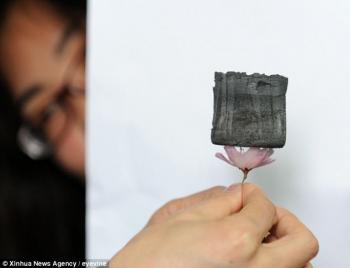A couple of weeks ago we reported about China's Zhejiang University's new sponge-like solid material (which they call Graphene Aerogel) made from freeze-dried carbon and graphene oxide. Now it seems that these foams may be used as conductive scaffolds for neural stem cells (NSCs).

Korean researchers already discovered that graphene sheets is better than glass for human neural stem cells growth - exhibiting a greater ratio of neurons to glial cells. Now Chinese researchers say that graphene foams coated with laminin (or other matrix proteins) could potentially serve not only as compatible neural housing but also as a means to control the tenants electrically.

According to the researchers, they found that the NSCs could be safely stimulated via capacitive charge injection in the potential window range from 0.2 to + 0.8 V, similar again to results from the Korean 2D graphene sheet research. They further noted that the 3D foam architecture provides more efficient charge injection and potentially more specific stimulation capability.

Graphene Aerogel

